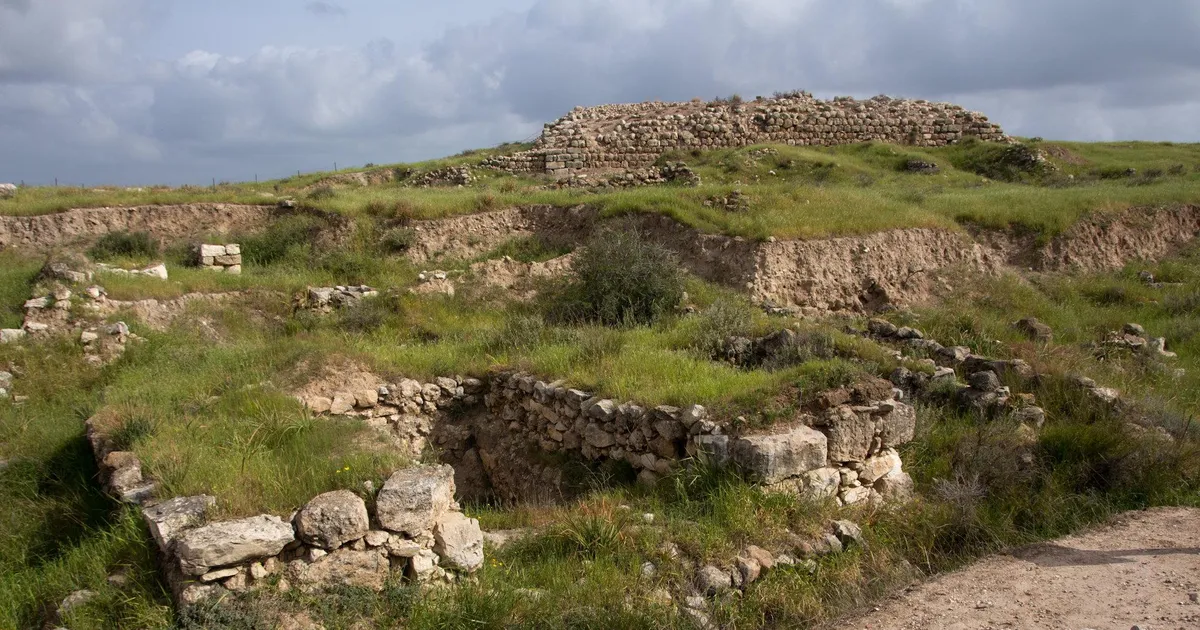By Robin Twite
Yosef Garfinkel, Colonial Archaeology in Palestine in the 1930s: The First Expedition to Lachish. Jerusalem: The Israel Exploration Society and Institute of Archaeology, The Hebrew University of Jerusalem, 2024. 712 pages, ILS 260 (about $75 US dollars). Though the title of the book by Garfinkel, a professor of archaeology at Hebrew University, is somewhat forbidding, its content is the reverse. In his new book, Garfinkel tells the fascinating tale of the first archeological expedition to Tel Lachish and the many hazards those involved faced – among them incomprehension from the local population, the fear of violence in a time of trouble, distance from health and other services, and difficult relations with donors. Garfinkel terms his book a “biography” of the first archaeological expedition to the Biblical city of Lachish. It records the work of a team of archaeologists from Britain who spent six seasons, from 1932 to 1938, excavating the massive mound called Tel Lachish in the south of Israel. While their achievements are described in detail and the annual reports made to donors by the director of the project, James Starkey, and his successor are printed in full, the book is notable not only for this, but for fascinating picture it gives of the trials and tribulations of the team. It records their relations with those who funded the expedition, their dealings with the local villagers, their contact with British Mandatory officials, their problems with poor roads, and the absence of medical services. Lachish is a city frequently mentioned in the Bible, successively in Canaanite, Judean, Egyptian, Assyrian, Persian and Hellenistic contexts. The British Museum houses the great panels that the Assyrian king Sennacherib had carved in stone on his return to Nineveh, which record the siege and capture of the city. They are graphic and detailed. On occasion the expedition was able to perceive that those who carved them had represented the actual walls and dimensions of Lachish, the remains of which can still be traced. In fact, before Starkey’s expedition, as Garfinkel explains, where the actual site of Lachish was, was not clear. There were other possible sites. The impulse to find out more about the Holy Land played a part in the creation of the expedition to Lachish in the 1930s, but its members seem to have been motivated by a wish to know about the past for its own sake and not simply for religious reasons. The expedition’s members spent six seasons excavating Lachish and one of them, Olga Tufnell, the only woman to play a prominent part in the project, devoted a further 20 years or so to completing detailed reports on its findings, while resident in London. We are told that during these years she sold her home in order to have funds to continue to edit the extensive material at her disposal. It is details such as this, which lend color to the book. There are accounts of the way in which different donors behaved, as described in letters and other documentation. One tried to take over the dig, one published an account of the findings under his own name though he had never lifted a spade! The Mandatory Government supported the enterprise, and even expropriated the land of Tel Lachish. This involvement is an early example of the way in which archaeology can be related to perceived political benefit. The relations of the archaeologists with the local villagers who both worked on the site and sometimes impeded its progress by demanding compensation for lost agricultural land on and around the tel provide evidence of the “colonial” attitudes of this members. One of them writes that it is impossible to get the villagers to really understand why money is being spent on digging up the past. In the course of the six years of work, two laborers were killed, and it is not clear whether or not their families were paid compensation. Only six or seven of the several hundred who worked on the dig over the years are named in the extensive documentation available to professor Garfinkel. On the positive side, the villagers took advantage of a small center for the treatment of eye disease which Miss Tufnell ran and must have been aware how much the economy of their communities benefitted for the work of the expedition. Central to the content of the book is the fate of its initiator and leader James Leslie Starkey, a man of energy and ability. He was murdered in a terror attack 1938 by members of an Arab gang while driving from Lachish to Jerusalem. The country at that time was in a state of disorder and an outbreak of violence among the Arab residents of Palestine in the years 1936-1939. Two members of the gang were caught and hanged by the British authorities, but it does not seem there was much of a trial. Garfinkel suggests, however, that it was not a random act of violence but a deliberate assassination, organized by the local villagers angry at delays in paying the compensation for their loss of agricultural land. All in all, the book is an impressive contribution the history of archaeology, notable for its breadth of interest. Professor Garfinkel has himself worked at Lachish and it able to give the reader through his personal involvement and deft use of the material at his disposal, a sense of what it was like to deal with bad roads, limited health provision, greedy donors, potential violence, while searching for the history of the past. Today the tel is a national park. It has not all been excavated and may still have more secrets. Robin Twite was director of the British Council in Israel from 1968 to 1973. He married an Israel and returned to Israel in 1990 on his retirement. He is resident in Jerusalem and has worked for over two decades promoting cooperation between Israelis and Palestinians over environmental issues.
